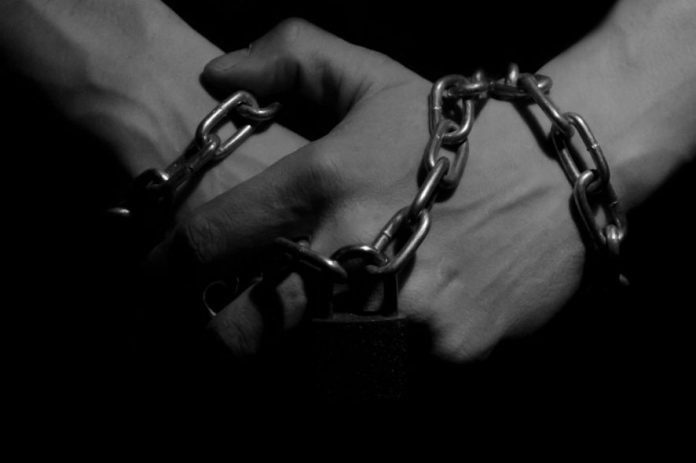This article is written by Gitika Jain pursuing BBA.LLB (Hons.) from Amity University, Kolkata. This is an exhaustive article which deals with the process for investigation of crime.
Table of Contents
Introduction
The chief practitioner of criminal law is the prosecutor. He is the representative of the State and holds the interest of the public at large in creating and maintaining lawful society. Before trial happens investigation of crime. There are various elements present in a criminal case like the role of the public prosecutor during this phase, the limit to which “no prosecution” and prosecution decisions can be taken, the extent of coordination between the prosecutor and the police, the fastening of the investigation process, and the need for expansion of the role of public prosecutor through various functions given by magistrate.
The first step – First Information Report
Whenever there has been the commencement of an offence an FIR is lodged before the police. If the offence is a cognizable offence the police after registration of FIR commences investigation either by itself (Section 156(1) CRPC) or under the orders of the magistrate (Section 156 (3), 154, 155 (3), 202 (1) CRPC). For a simple understanding, it can be said that soon after the registration of FIR the process of investigation begins and this function of the police has been written down in the preamble of Indian Police Act of 1861. The power of the police officer to investigate an offence which is cognizable under Section 156 of CRPC is absolute and wide. The police can investigate the case on its own and the courts are not justified to keep a track of the investigation. We have no control over the investigation of the police or over the actions the police is allowed to take during the investigation. but there are conditions provided to this that if the police surpass its limit; improperly and illegally exercises his powers during the investigating a case the court has the power to consider that nature to be a breach of duty on the part of the police (State of Haryana v. Ch Bhajan Lal 1992) and may take in hand the procedure of investigation of offence (Eastern Spinning Mills v. Rajeev Poddar AIR 1985).
It has been provided under Section 157(1) proviso b of CrPC that the police may refuse to investigate in a particular case and they cannot be held liable for it. They are free to investigate at their own discretion. But there exists the safeguarding clause Section 157(2) which ensures that there is no misuse of such powers which have been granted to the police because it is mandatory for them to register an FIR especially when it seems to be a cognizable offence.
Thus from the above instances, it is very clear that before initiating the process of investigation it is important to file an FIR. Under Section 154 of CRPC, the recording of first Information in normal circumstances has been laid down. However, according to Section 156 (3), it is the discretion of the magistrate to register the case. The magistrate may also order the police to investigate the case to find out where there exist sufficient grounds for proceeding with the investigation under Section 202(1). He may also do so in case of non-cognizable cases under Section 155(3) CRPC.
Thus the process of investigation starts based on two conditions:
- Firstly there must be a reason with a police officer to suspect that the case is a cognizable offence
- The police must satisfy itself that there lies a sufficient ground for embarking on the investigation.
It is however mandatory for the officer in charge of the police to intimate to the magistrate having jurisdiction about the information received the cognizable offence under Section 157 (1). After these have been done the officer-in-charge shall proceed with the investigation.
Investigation
The term investigation in itself is not exhaustive, it includes the proceedings involved in the collection of evidence by the police officer or by the person authorised by the magistrate on this behalf. The person who is involved in investigation is known as the Investigating Officer (IO) of a particular case. The term investigation means conducting a search for facts of materials to find out whether any offence (cognizable or non-cognizable) has been committed. The very first step in the investigation is always finding out the facts and circumstances of the case. It is his duty to bring out the real unvarnished truth in the court of law. Thus the very objective of the investigation is not to secure a conviction by any means but to find out the base of the case and provide the innocent party, justice. In Rishbhud’s case, the essential ingredient of investigations were laid down:
- Proceeding to the spot
- investigating and ascertaining the facts and circumstances of the case
- Taking measures to arrest the suspected offender
- Collecting evidence against him/her
- Formation of opinion to find out whether the materials connected to the case actually go against the offender or are in favour of him/her.
Elements of investigation
Case diaries
It is well-written in law that the investigating officer is required to keep the records of the process of investigation in a diary mentioning all the details of the facts in chronological order. The diary must be maintained with the objective that it will serve some purpose for the result of the case. Non-maintenance of a diary will fail to serve its purpose for the case. The case diaries may be used at the time of the trial or enquiry to help to forward the case but it does not serve a purpose of evidence to the case. However, to maintain the rules and regulations related to the case diary, there have been difficulties that have arisen to the police respondents. The diary is required to be maintained during the time of investigation which hinders the smooth functioning of investigation of the police officers. The failure to maintain a case diary properly is basically due to the heavy workload of the police officers in particular cases. In the case of Om Prakash vs State, it was observed by the Supreme Court in contrary to the existing rules of case diary that the case diary must be written at the place of investigation and the will not be allowed to be returned at the end of the day. This rule by the Supreme Court created or has failed in the maintenance of case diaries because of the difficult working conditions on the field. But this decision was taken in view of writing the facts relevant to the case in the chronological order.
Spot visit
Section 157(1) of CRPC and rules 158 and 161 of OPM requires the police to be present on the spot where the case occurred and conduct the investigation thereon. Contrary to the said provisions the general police actions after receiving information of any case start with preliminary enquiry. There are various factors that affect the accessibility of police to the spot. The very important factor is the experience of the researchers in reaching out to the public and gathering as much information related to the case as possible. The physical conditions in rural areas where travelling from one spot to another is a task is also a factor. Due to certain seasonal topography, accessibility to some particular areas for investigation is hindered from time to time. Although prompt action is an important feature of the police, it can nowhere be seen in today’s world. The time taken by the police to respond to a particular case is increasing day by day. However, the prompt action of the police to a particular case can only be considered when the case ought to be serious as a matter of fact.
Collection of evidence
This step involves various other steps in itself that all together combines and forms a crucial task of investigation work. The very objective of collecting evidence for a particular case is to collect all forms of physical, documentary and circumstantial evidence. Evidence also includes a collection of every material or substance related to the case or recording of statements associated with the parties of the case. Physical evidence like blood semen fingerprint also includes as valid evidence to the case. Documentary evidence like something that exists in paper or electronic form and circumstantial evidence is like the facts collected during the time of investigation at a spot where the crime ought to have been committed are also helpful in determining the case deeply. Hearsay evidence is not fully accepted in the court of law but in certain situations are also admissible as evidence.
Searches and seizure
Searches are a part of the investigation under Section 2(h) and are important for the collection of evidence. A search of premises comes under physical evidence. Search means to find out any certain instances which strengthen the case. During the process of investigation, the police officer has the power to conduct search and seizure with or without a search warrant from a magistrate. According to Section 165 CRPC, a general search on the chance that something important might be found out related to the case can be done and such provisions are discretionary in nature.
The role of oral testimonies or examination of witnesses in the investigation
The only part of the collection of evidence that is included within the meaning of the word evidence is an examination of witnesses. The role of any witness to a case is of paramount importance. In order to secure convictions, the oral testimony is very important for the police to rely upon. Where the offence has been committed to the people present in and around that place also serve as important witnesses to the court. Section 161 and 162 CrPC provides for the procedure of examination of witnesses and the includes recording of statements of all the persons important to the case directly or indirectly.
Arrest
All the important evidence gathered over a number of days or weeks related to the case shall be presented before the court within 24 hours of arrest and power to arrest is not always vested with the police. On the basis of probable cause to believe the police may arrest when he or she is of the opinion that the individual has broken some law.
Bail
At the time when bail hearing is going on before a court of law, there is no legal requirement for the court to hear the prosecutor if the case is not grave. The public prosecutor in such cases does not get to know about the case unless and until the complete investigation has been conducted on the part of the police and the final report of the charge-sheet has been filed before the court.
Witness examination
At the time when the police are investigating the matter and examining witnesses and recording their statements, it is assumed that they are working deeply and accurately. But the real scenario is otherwise and the police themselves acknowledge it. Preserve enquiries and poor quality investigations livewires investigations and rude behaviour with the victims and witnesses are done on the part of the police. An amendment in the law to that effect will have to be brought down to check up on the procedure of investigation by police that can lead to accurate investigation and truthful decision.
Conclusion
A very controversial social issue of all times has always been violence by criminal justice actors. Since the 1970s the criminal justice system and it’s representatives have always been criticized by many but had undergone many changes since then and tried to improve in every aspect.
References
LawSikho has created a telegram group for exchanging legal knowledge, referrals and various opportunities. You can click on this link and join:











